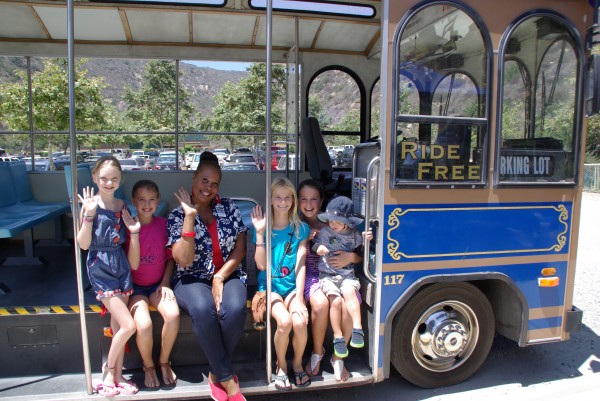
Photo by Loreen Berlin.
What would it take to get residents revved up about boarding a bus or calling a driver on demand instead of revving up their own cars?
That’s what consultants hired to evaluate the city’s $2.2 million public transit system will now attempt to discover after the City Council on Tuesday approved more funding for Vancouver-based IBI Group to broaden the scope of a narrower study they began last year.
Residents were critical of the limited analysis consultants presented at a workshop last month, believing they should worry less about making the existing bus line more efficient for current users — largely comprised of students, seniors and domestic workers — and more about developing a transit network that will entice new passengers to leave their car keys on the counter.
City officials directed the consultants to expand their analysis and step up outreach.
Under the previous contract approved last June, the consultants were asked to look at reducing costs of the mainline buses, investigate fare hikes on city buses and advertising on trolleys; and to assess the taxi voucher program and senior transportation services. The consultants suggested a number of possible actions, such as modifying hours of service, eliminating low ridership routes and raising fares on the blue and white buses; expanding the taxi voucher program and better coordinating city and county bus routes.
Even so, in feedback on their preliminary findings, residents called for ideas on how to expand the customer base to tame downtown congestion.
The Council approved a contract expanding IBI’s analysis, including outreach to key interest groups, another community workshop, a mail-out of a survey to all residents and businesses; and an analysis of the findings to determine the best strategies to influence mobility choices of residents. This would incorporate exploring earlier suggestions to operate the buses into the evening hours and to consider alternatives, such as on-demand taxi.
Consultants said they could also examine previous proposals to extend summer trolley service north and to relocate the bus depot to ACT V for additional fees, which were not approved.
Even so, Mayor Pro Tem Bob Whalen said he hoped these options could be given more consideration.
Staff already discussed extending the trolley route to the Crystal Cove shopping center with Irvine Company officials, who liked the idea of the trolleys ferrying shoppers to the center but refused to allow its parking lots to serve as a park and ride destination, said Steve May, the city’s public works director. For that, staff can consult with school and parks officials over identifying possible remote parking near El Morro Elementary and the park entry, May said.
As for relocating the bus depot, May said that consideration should be held off due to discussions with Laguna College of Art and Design over a possible leasing parking space at ACT V lot during non-summer months, which could inhibit its use as a bus depot.
Whalen asked about other depot locations, but City Manager John Pietig said it would be difficult to find one that could accommodate the turn around needs of the large county buses. “I’m just not aware of any good alternatives, to be honest,” he said. “There’s just not a lot of available land for something of this size.”
The results of IBI’s research will also prove valuable to a concurrent study by Irvine’s RBF Consulting, said principal planner Scott Drapkin. Funded by a Caltrans grant secured by Drapkin, RBF is attempting to outline a citywide network that accounts for the needs of pedestrians, cyclists and motorists and includes reliable public transit options.
As part of that effort, about 50 locals gathered at the Susi Q Center last Saturday and stepped and/or peddled out with city staff and the project team to explore parts of Laguna Beach from the vantage of cyclists and pedestrians. The event included a three-to-four-mile bike ride and a two-mile walk, offering participants the chance to share their ideas on improving the experience of getting around town.
Mobility planning springs from the state’s “complete streets” mandate to make streets accessible to more than vehicular traffic and the city’s goal to draft a compliance plan by 2015.




